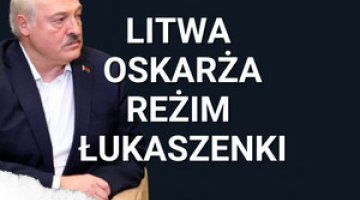Belarus: the phenomenon of temporary economic growth
During the first three quarters of this year, Belarus recorded a GDP growth of 2.7% – this is more than the spring forecasts presented by the government and international financial institutions. The economy achieved this positive result in spite of the EU sector sanctions introduced in June, the US restrictions implemented in parallel to them and the structural problems of the ineffective command and distribution model. This is, on the one hand, an effect of the so-called “low base” in the first half of 2020, when the pandemic led to a radical deterioration of all economic indicators, and on the other, the result of a post-pandemic rebound during which some producers took advantage of the sharp increase in the demand on global markets.
However, the current trend does not seem to be long-lasting. Compared to the results for July and August, the GDP growth rate in September fell below 3%, which will probably translate into a weaker result for 2021 as a whole; this is currently estimated at 1.2 to 2.5%. Moreover, at the end of the year, the first major effects of the EU and US economic sanctions will be felt, primarily targeting the exports of petroleum products and potassium fertilizers, which are important for the economy.
The short-lived export ‘miracle’
The main source of economic growth in the first nine months was exports, which increased to US$28 billion, i.e. by 36% compared to the same period in 2020. In the case of Russia (Belarus’s main trade partner), which accounts for more than half of trade, the improvement was not enough to reverse the negative balance seen for years. It reached approximately US$5 billion, which was partly an effect of the increase in crude oil imports in the first half of the year in relation to the significantly reduced level in the first months of 2020 (this reduction was due to Russian-Belarusian disputes over the nature of further integration). Trade with the EU turned out to be more advantageous – exports there increased by 96%, which resulted in a positive balance of US$2.2 billion, which was nearly US$3 billion higher than in 2020. As a result, the total negative balance in foreign trade in the first three quarters of this year was US$1.5 billion, US$900 million lower than in the corresponding period last year.
This rapid growth of sales to EU markets is conditioned by a natural rebound in the market after last year’s stagnation during the first months of the pandemic. The sanctions imposed by the EU in June, affecting, inter alia, petroleum products, one of the country’s main exports to the EU, will not be felt in full immediately and so this could also allow Belarusian exports to develop. These restrictions prohibit EU importers from signing new trade agreements, but they do not apply to previously concluded contracts. Therefore their implementation – at least until the end of the year, when most of them expire – will still be an important factor in increasing the level of exports. For years, the main recipients of Belarusian petroleum products (due to the operation of the Rotterdam and London oil exchanges) have included the Netherlands and the United Kingdom, which joined the EU economic sanctions.
The growing potential of the private sector
Another important factor that stimulates the higher than expected growth is the increase in exports in other industries which are not yet affected by the Western sanctions regime. Among the most rapid development of sales were categories such as: furniture and wood (over 50%), chipboard (over 130%), cars (over 140%) and steel products (50–70%). A significant part of exports went to EU markets (including Poland, Germany and Lithuania). The exception are Geely cars manufactured under a Chinese license, intended for sale outside the EU, mainly to Russia.
The export success in these industries is not only the result of the increased demand for consumer and construction goods after the pandemic downtime, but also largely due to the dynamically developing private sector, which is able to quickly adapt to changing economic conditions. The private sector skillfully used its price competitiveness and niches created on foreign markets (e.g. in the furniture industry) as a result of disrupting supply chains during the pandemic. According to the calculations of the independent Belarusian economic analysis centre BEROC, private entities generated almost 65% of the country’s exports in 2020, which is more than a twofold increase compared to 2012. Thus, the structure of the economy has changed leading to a decrease in the importance of the public sector. This also applies to the output of oil refineries and the potash plant, which Minsk views as strategic entities; their current real share in exports does not exceed 19%. However, this change has not affected the government’s policy in any way, which is still aimed at supporting partially unprofitable state-owned entities.
The absence of sustainable growth factors
The 2.7% economic growth went against the expectations of both the government and international financial institutions such as the World Bank and the International Monetary Fund. Therefore, in October, new forecasts for the economy appeared which, instead of recession or stagnation, indicate a high probability of 2021 closing with positive GDP growth, estimated at 1.2–2.5%. However, all forecasts – except for the government’s optimistic forecast envisaging 2.9% GDP growth – assume much poorer results in 2022. The World Bank is the furthest in its calculations, predicting that the Belarusian economy should expect a 2.8% fall in GDP next year.
The negative forecasts result from the lack of strong and stable growth factors other than the growing share of private capital. The reversal of the positive trend will accelerate due to the loss of the low base effect and, at the end of the year, the first major effects of EU and US sanctions (affecting primarily the export of oil products and potassium fertilisers) will be felt. According to preliminary estimates by independent Belarusian economists, in the first three quarters of 2022, these restrictions may lead to a reduction in exports by 10–15%, which will mean a loss of at least US$4.5 billion and 6–10% of GDP.
Belarus is already feeling the direct and indirect effects of the sanctions, such as a diminishing credit rating and investment attractiveness. Minsk is not able to obtain any loan from the West or organise, for example, the issue of Eurobonds on Western markets. In addition, more and more companies (especially in the machinery industry, including the BelAZ and Amkodor plants) are struggling with problems in cooperation with their Western partners, which affects their financial condition and the continuity of production.
The government is not hiding the growing problems, including those connected to the petrochemical industry, which – as Deputy Prime Minister Yury Nazarau admitted – has already generated losses of US$80 million due to the sanctions. The first signs of invested capital withdrawing from the market are also visible, since most foreign companies consider Belarus to be an uncertain market with little prospects. Western entities are also breaking off their long-term cooperation, e.g. British American Tobacco ceased production of its products in the Neman tobacco factory in Grodno in September, which is mainly due to the fact that this industry was included in the EU restrictions.
The rapidly rising inflation, which exceeded 10% between January and September, is a growing threat to the stability of the economy, and there is much to indicate that this trend may continue.
The inevitable consequences of the sanctions
The Belarusian economy, based on an ineffective command and distribution model, is no longer able to generate sustainable economic growth. The influence of negative factors, compounded by a deep political crisis and sanctions, is unlikely to be balanced by the activity of the dynamic and creative private sector, which is currently operating contrary to the government’s anti-liberal policy. Alyaksandr Lukashenka’s regime will not reform the economy or engage in real dialogue with the West, as such changes are perceived as potentially weakening its grip on power. Instead, it will try to reduce the severity of Western sanctions and take precautionary measures. In February this year, a deal was struck with Moscow on the redirection of nearly 10 million tonnes of petroleum products from Lithuania to Russian ports in the next three years. In turn, after the Belarusian refinery Naftan was subjected to US restrictions in June, Russia officially withdrew from supplying oil there, but most likely still sells it through less recognisable companies. Moreover, businessmen from Lukashenka’s inner circle (such as Aliaksei Aleksin and Mikalai Varabei), in response to the imposition of sanctions, got rid of some of their assets, ceding them to relatives and trusted associates. These actions, as with the attempts to reopen trade to Asia, will not, however, solve the basic problem, which is the gradual limitation of Belarus’s profitable trade with the EU. Hence, Western economic restrictions will further deepen the expected recession.




